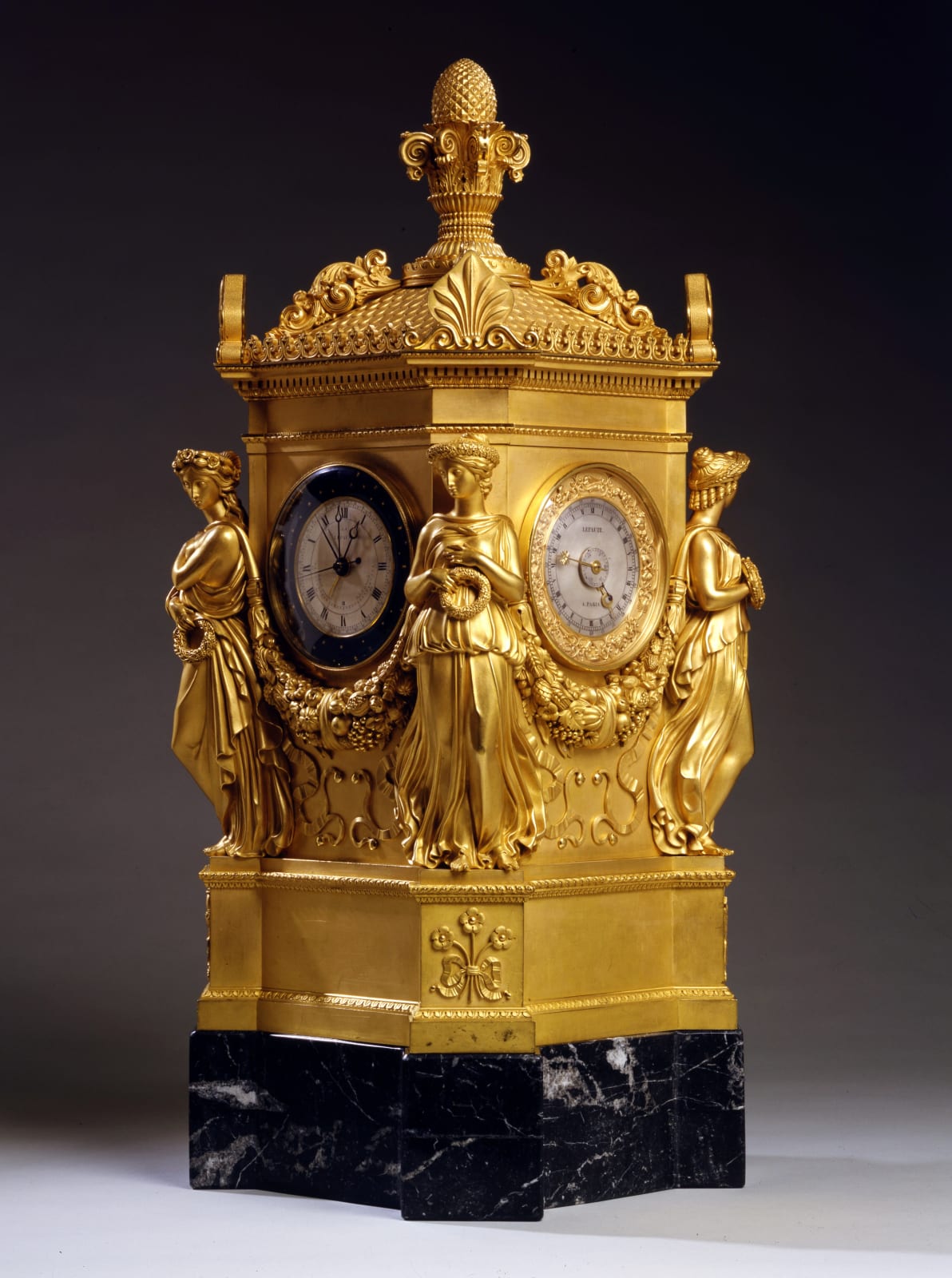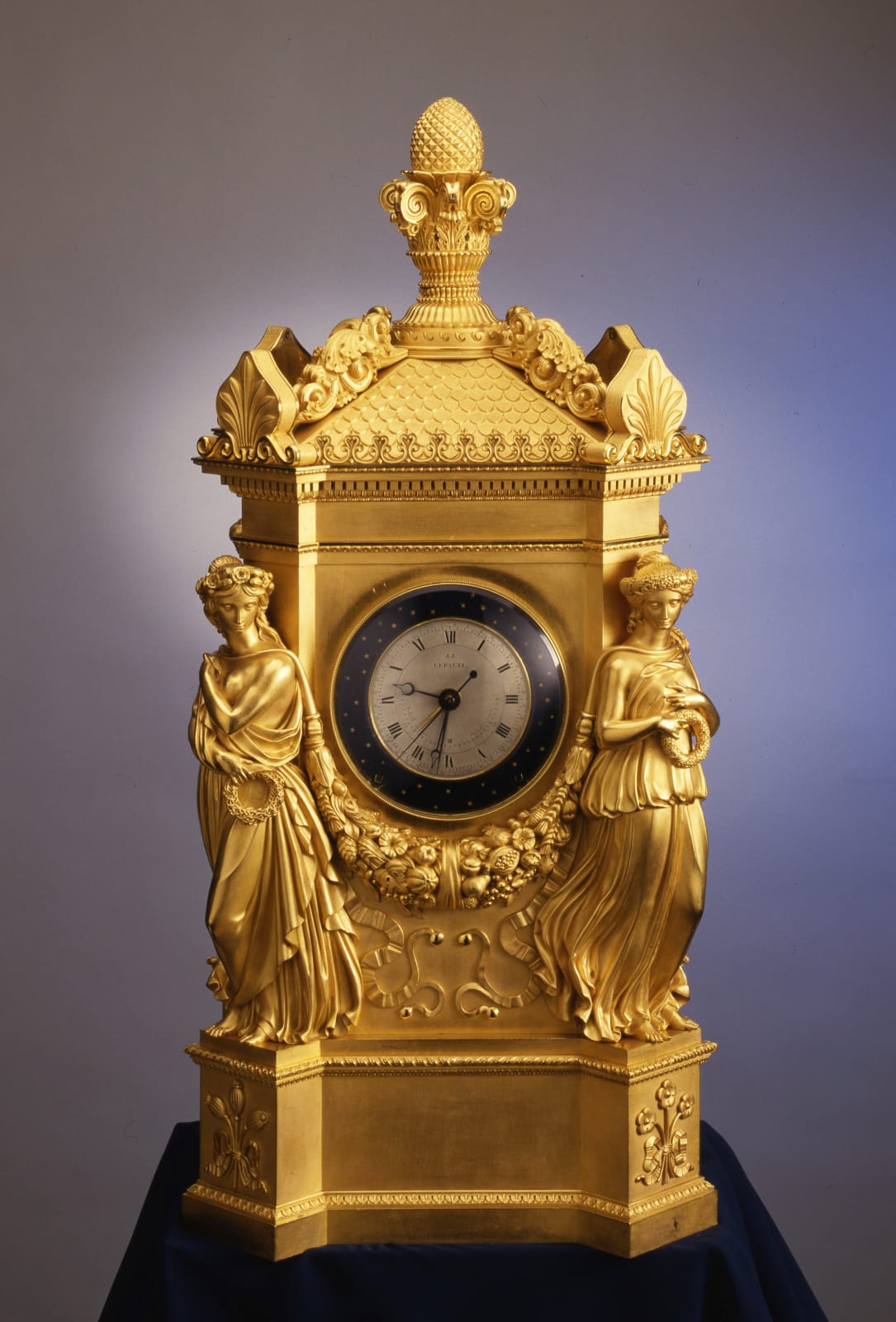Jean-Joseph Lepaute
A superb Empire gilt bronze three dial astronomical clock by the eminent French clockmaker Jean Joseph Lepaute.
Paris, dated 1808
THE HOUSE OF LEPAUTE. FRENCH FOUNDED IN 1748
BY JEAN-ANDRE LEPAUTE (1720-87/9)
AND JEAN-BAPTISTE LEPAUTE (1727-18021)
Since its foundation, die House of Lepaute has maintained the highest reputation among leading French clockmaking firms. Successive generations of the Lepaute family ran the business which enjoyed significant acclaim (luring the Eighteenth and Early Nineteenth Centuries The firm tug an in 17-tS when Jean-Andre and his brother. Jean -Baptiste established a clock manufacturing business in Paris. They were appointed “Horlogers du Roi”, making a number of fine clocks for the Louvre, Paris. Jean-André also constructed several of Paris’s public clocks, one of which on the Ecole Royale Militaire is till working in order. He also made several technical advances in the field of horology. On his retirement, 1774 his brother, Jean-Baptiste tool his nephews, Pierre-Henry (1745 – 1806) and Pierre-Basile Lepaute (1750 – 1843) into partnership. Pierre-Henry retired in 1798where upon Pierre-Basile entered a partnership with his nephew, Jean-Joseph Lepaute (1768 – 1846). They were joined by Pierre-Basile’s son, Pierre-Michel (d. 1849), c. 1811, the firm was renamed Lepaute et Fils, established at prestigious premises at Place du Palais Royal, Paris.
Jean-Joseph Lepaute, born in Bieves, France was a major figure within the family firm. Like his great uncle and founder of the firm, he was a superb craftsman. He was appointed clockmaker to Napoléon. In 1813 he made a clock for the Palais de Fontainbleau; he constructed clocks for other important residences including the Château de St. Cloud and Château de Comilègne In addition he made many other fine home clocks In 1821 he was appointed official clockmaster to Paris, with special responsibility for the maintenance and repair of all the City’ s public clocks Toward the end of his career he worked in close association with another important member of the family firm Augustin-Michel- Henry Lepaute (1800-85).The son of Pierre-Henry. Augustin-Michel-Henry was appointed clockmaker to Louis-Philippe and Napoléon III. He made the clucks for the Palais de Justice. Paris and the Bourse, Marseilles Two of his regulators are in the Conservatoire des Arts et Metiers. Paris while one of his gold watches can be seen al the Guildhall. London.
During the Eighteenth Century , French decorative clockmaking had reached its apigée, with neo-classical design prevailing during the 1750"s and until c.1830. During this period the house of Lepaute. created some distinguished pieces. An example of a Louis XVI regulator by Lepaute. C. 1770 is housed at Windsor Castle; the case was made by Nicolas Petit, and in reaction to the earlier exuberance of rococo design it is characterised by simplicity and symmetry. A later example of a Lepaute mantel clock, c. 1780 in the Wallace Collection. London displays winged sphinxes, in keeping with the taste for Egyptian decoration It stands in contrast to a Lepaute Directoire mantel regulator, signed Henry N(ev)eu de Lepaute a Paris, c 1790-5, which has extremely simple lines and little decoration. However as exemplary of all Lepaute time pieces, it has " a very well executed movement and dial". (F.J. Britten, Old Clocks and Watches and their Makers, 1911).
Copyright 2002 by Richard Redding Zürich All rights reserved!



